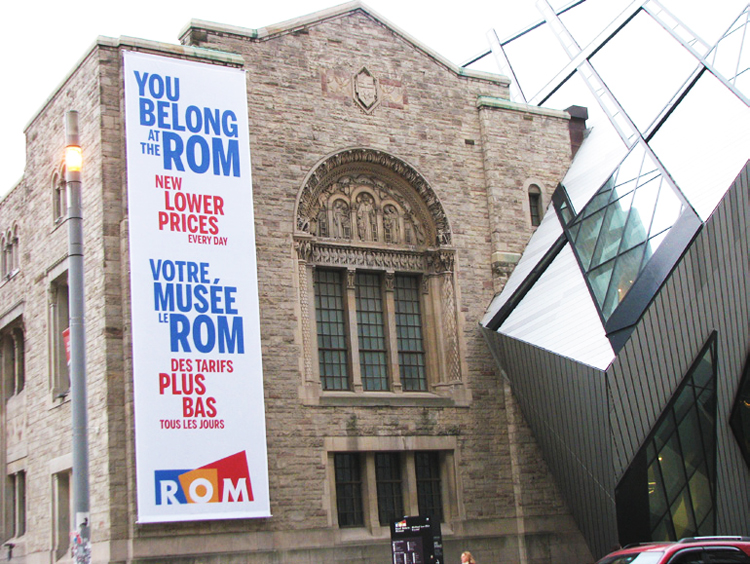|

Photo: The Royal Ontario Museum (ROM) took a leadership role in October 2011 by reducing admission prices to improve affordability for all visitors in challenging economic times.
Yes, these are tough economic times and strategies to boost earned income and control operating costs are of substantial importance to the financial sustainability of many museums. The reality, however, is that a combination of private and government sources still account for the bulk of operating revenues.
Financial sustainability is thus very much about identifying not only what the market wants but also what funders want. The good news is that funders want museums to keep doing what they do best in adhering to mission – education, preservation, etc. At the same time funders want to be able to validate their support on the basis of museum contributions to meeting wider community needs, be they economic or tourism development, downtown revitalization, quality of life and a myriad of issues of particular concern in each community.
So having recognized that mission and meeting wider community needs are at the core of financial sustainability, here are five selected trends related to revenue generation and cost control:
- Recognition that Higher Attendance May Yield More Benefit than Admissions Revenue: Higher attendance increases exposure to revenue centers and more repeat visits boost the value of membership. And attendance is a performance measure that funders look at. At the same time museums are increasingly questioning the strategy of relatively high admission charges combined with free days when it causes people to wait for the free days. There has also been a growing number of museums that have reduced admission charges and/or strategized how to add value to existing charges.
- Redefinition of Admission Ticket Age Categories: For example, an issue is the age at which discounts to youth should end and the adult admission rate start. Generally discounts for students or youth are to age 17 or 20 with the adult ticket price starting at age 18 or 21. In some cases older students with ID receive the discounted rates. What is not taken into account is that it is in their early 20s when youth that have completed their schooling are getting their first, often low paying jobs, are less likely to have access to the money of their parents, and are particularly cost conscious. Many stop attending museums. A strategy of defining adults starting at age 25 is increasingly being considered for purposes of audience development.
- An Increased Emphasis on Evening Rentals: Most museums are open to the public for about 7-8 hours per day and may have one evening opening per week. Rentals are in essence a time-share of the building, an important earned income generator and a good way to attract potential funders into the building.
- Alternative Ways to Provide Food Service: One is for pre-packaged foods and beverages to be sold within the retail store. This offers a minimal yet often acceptable level of food service. And it offers the physical and operational efficiency of having the same staff handle both. Another option is site dependent. A downtown or other site close to existing restaurants allows a museum to promote admission as a full-day pass and to make discount arrangements with nearby restaurants that encourage visitors to eat, shop and return to the museum if they so choose. In addition to avoiding the high costs of investing in restaurant facilities, it allows a museum to communicate the message that it has foregone food service revenue to encourage spending in tax-paying commercial businesses.
A Growing Number of Formal Collaboratives: Collaboration for common benefit can translate into joint marketing and purchases, shared staffing and even management agreements in which a larger museum contracts to provide management services to smaller ones. It is a revenue generator for the larger one and a cost control strategy for smaller museums. Formal collaboratives will be created in an increasing number of cities.
Back to Cultural Capital Spring 2012 main page...
|



